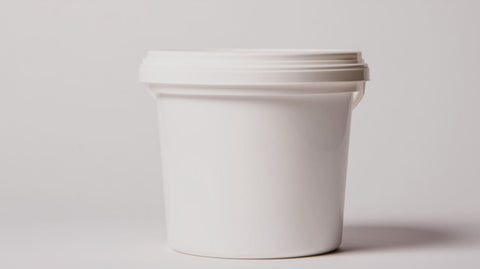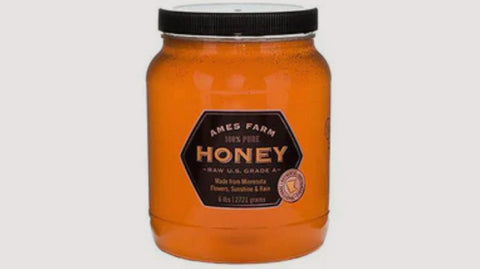To store bulk honey, keep it in airtight, food-safe containers like plastic buckets, glass jars, or stainless steel drums in a cool, dark place away from moisture and strong odors. This prevents fermentation, slows crystallization, and helps honey stay fresh and usable for years.
Honey has been treasured for thousands of years, not only for its sweet taste but also for its ability to last almost indefinitely when properly stored. While a small jar of honey may not require much thought, storing honey in bulk requires more care. Whether you are a beekeeper with gallons of honey after a harvest or a consumer who likes to buy in bulk to save money, proper storage techniques are the key to maintaining its quality.
In this guide, we’ll explore everything you need to know about how to store bulk honey so it stays fresh, flavorful, and ready to enjoy for years to come.
Why Proper Honey Storage Matters
Honey is often described as one of nature’s most stable foods, but that does not mean it is invincible. If exposed to moisture, heat, or air for extended periods, honey can lose its natural properties. Crystallization may occur, flavor can be affected, and fermentation can develop if water enters the container.
Proper storage helps to:
- Preserve the honey’s natural enzymes, antioxidants, and nutrients.
- Prevent unwanted changes in texture or taste.
- Avoid the growth of yeast, which can cause spoilage.
- Keep honey in a usable form for longer periods.
The goal is not only to extend honey’s shelf life but also to keep it as close as possible to the way it was when it was first harvested.
Best Containers for Storing Bulk Honey
The type of container you choose makes a huge difference in how well honey holds up over time. Honey is slightly acidic and can absorb odors, so choosing safe and appropriate containers is essential.
Common bulk honey storage options include:
- Food-grade plastic buckets: A popular choice among beekeepers because they are affordable, lightweight, and easy to handle. They are available in a variety of sizes, from one-gallon buckets to large five-gallon containers. Make sure they are tightly sealed with a lid to prevent air and moisture from getting in.
- Glass jars: Glass is non-reactive, meaning it will not alter the flavor of honey. Airtight glass jars are great for long-term storage, especially when honey is portioned into smaller amounts. However, they are heavier and more fragile than other options.
- Stainless steel drums: For commercial operations or serious bulk storage, stainless steel drums are the gold standard. They are durable, resistant to corrosion, and do not leach any chemicals or flavors into the honey.
For many people, the best approach is to store large quantities in sealed buckets or drums, then portion out smaller amounts into glass jars for daily use. This reduces the number of times the bulk container is opened and helps maintain freshness.
Ideal Storage Conditions
Even though honey is highly stable, its environment still matters. A little planning goes a long way toward keeping bulk honey in excellent condition.
Here are the key storage conditions to follow:
- Temperature: Honey should be stored at room temperature, ideally between 50°F and 70°F. Warmer temperatures can cause honey to darken and lose its delicate flavor, while colder conditions may speed up crystallization.
- Light: Keep honey in a dark place, such as a pantry, cupboard, or storage closet. Direct sunlight can break down beneficial compounds and reduce quality.
- Moisture: Honey naturally resists bacterial growth because it is low in water. However, if moisture enters the container, fermentation can occur. Always ensure lids are tightly sealed.
- Odors: Honey is highly absorbent and can pick up odors from surrounding items. Avoid storing it near strong-smelling foods, cleaning products, or chemicals.
By following these simple rules, honey can remain fresh and flavorful for years without any problems.
How to Prevent and Fix Honey Crystallization
One of the most common changes that occur in honey over time is crystallization. This is when honey becomes grainy or forms solid crystals. Crystallization is completely natural and does not mean the honey has gone bad. In fact, many people enjoy crystallized honey because it is easier to spread.
Still, if you want to prevent or slow crystallization in bulk storage, consider the following:
- Store honey at a stable temperature. Fluctuations in heat and cold speed up crystallization.
- Keep containers sealed tightly. Exposure to air can encourage crystals to form.
- Stir honey before storing it to distribute particles that naturally encourage crystallization.
If honey does crystallize, it is easy to fix. Place the container in a warm water bath and stir gently until the crystals dissolve. Avoid using a microwave, which can overheat the honey and damage its beneficial enzymes.
Mistakes to Avoid When Storing Honey
Because honey is such a forgiving food, people often assume it can be kept just about anywhere. However, some mistakes can significantly reduce its quality.
Avoid these common storage errors:
- Using non-food-safe containers that may leach chemicals into the honey.
- Leaving lids loose or unsealed, allowing air and moisture to seep in.
- Storing honey near ovens, stoves, or direct sunlight, which increases temperature fluctuations.
- Adding flavorings, herbs, or water directly into bulk containers, which raises the risk of spoilage.
By steering clear of these pitfalls, you ensure your honey stays in the best possible condition.
How to Use Bulk Honey Efficiently
Buying or producing honey in bulk often means you have more than you need for everyday use. Breaking it down into smaller portions can make it easier to manage and prevent constant exposure of your bulk container.
Some practical ways to make the most of bulk honey include:
-
Portioning into smaller jars: Fill small glass jars or squeeze bottles to keep on your kitchen counter or table. This allows you to dip into your bulk supply less often.
-
Cooking and baking: Honey can replace sugar in many recipes. Keep a small jar handy for sweetening tea, coffee, or oatmeal.
-
Homemade gifts: Fill mini jars with honey and share them with family and friends. Labeled jars of honey also make great wedding or party favors.
-
Skincare and remedies: Honey can be used in homemade face masks, lip balms, and natural cough remedies.
-
Fermentations: If you enjoy making your own beverages, bulk honey is perfect for brewing mead or kombucha.
With some creativity, bulk honey becomes more than just a pantry staple. It can be part of your cooking, health routine, and even gift-giving traditions.
Where to Buy Bulk Honey
If you’re looking for a trusted source of high-quality bulk honey, Ames Farm is an excellent choice. Known for their single-source varietal honeys harvested from apiaries across Minnesota, Ames Farm offers bulk options in jars, buckets, and pails that are perfect for both home use and commercial needs.
Their commitment to natural beekeeping practices ensures every batch of honey is pure, flavorful, and carefully handled from hive to container. By purchasing from Ames Farm, you not only get premium honey but also support sustainable beekeeping and local agriculture.
Final Thoughts About How To Store Bulk Honey
Storing bulk honey correctly is simple once you understand what conditions it needs to thrive. Keep it in airtight containers, protect it from heat and light, and use proper storage methods to prevent crystallization or spoilage. With the right approach, honey will maintain its quality for years, providing you with natural sweetness whenever you need it.
Whether you are a beekeeper, a business owner, or simply someone who loves honey, the effort you put into storage pays off. Your bulk honey will remain as rich, golden, and delicious as the day it was harvested, ready to be enjoyed in your kitchen or shared with others.
You can rely on Ames Farm for premium bulk honey that’s carefully harvested and handled to preserve its natural flavor and quality. Explore their wide selection of single-source honeys to stock up with confidence and enjoy fresh, sustainable sweetness year-round.
Frequently Asked Questions About Bulk Honey
How long does bulk honey last?
When stored properly in airtight containers at room temperature, bulk honey can last indefinitely. Over time, it may crystallize or darken, but this does not mean it has spoiled.
What is the best container for bulk honey?
Food-grade plastic buckets, glass jars, and stainless steel drums are all excellent options. The key is using airtight containers to protect honey from moisture and air exposure.
Does honey need to be refrigerated?
No, honey should not be refrigerated. Cool, dark, room-temperature storage is best. Refrigeration speeds up crystallization and makes honey thicker and harder to use.
How do I fix crystallized honey?
Place the honey container in a warm water bath and stir gently until the crystals dissolve. Avoid microwaving, as excessive heat can damage honey’s natural enzymes and flavor.


